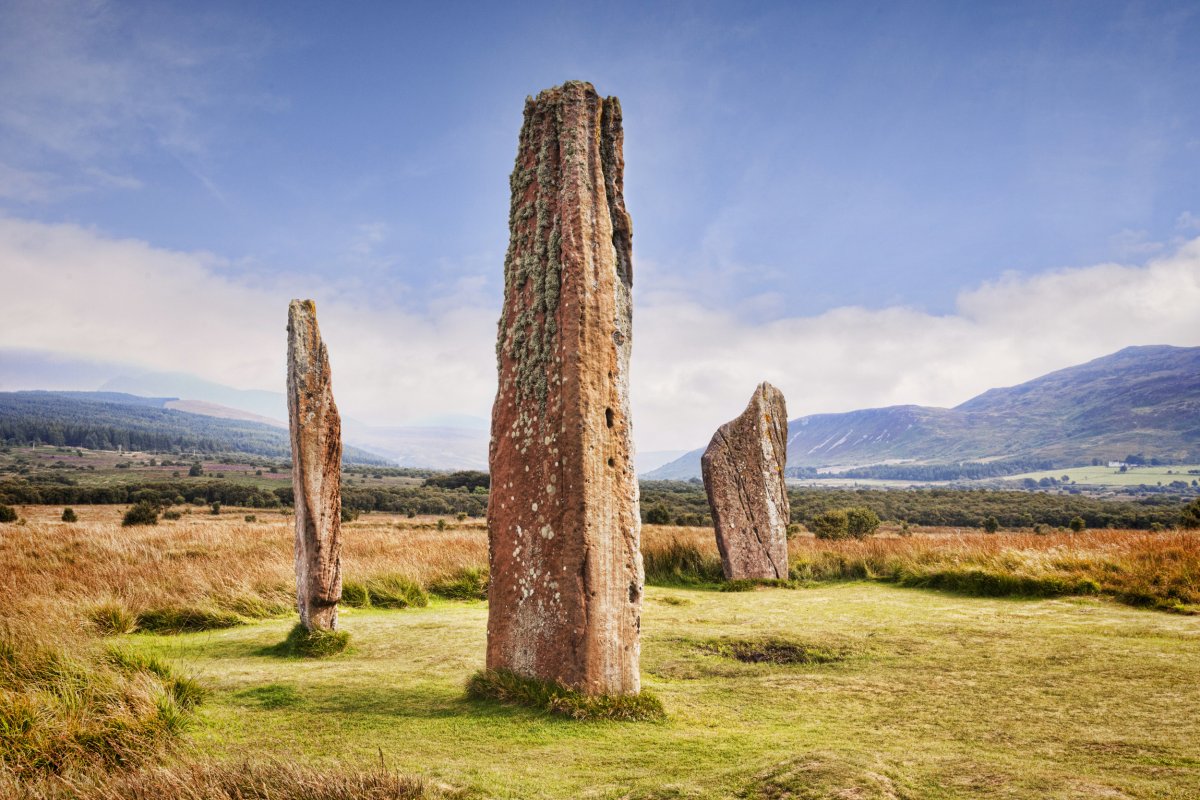A vast Neolithic structure that could date back to more than 5,000 years ago has been discovered on a rugged island off the coast of Scotland.
Researchers uncovered what is thought to be a complete "cursus" during excavations on the Isle of Arran this summer. These are monumental structures resembling ditches or trenches found in Great Britain and Ireland that date to the Neolithic period (around 4100-2500 B.C.).
An interdisciplinary team identified the structure in a location known as Drumadoon, which lies in the southwest of the island.
The monument is huge, measuring around 3,600 feet in length and 164 feet wide. These types of constructions were among the earliest monumental structures to be built in the region.

Such monuments are comprised of one or more rectangular enclosures. They are thought to have been constructed for ritual and gathering purposes.
The cursus found on Arran is defined by a large stone, earth and turf bank that runs around the entire perimeter of the enclosure.
Researchers said that it is the most complete example of a cursus yet found in Britain, providing researchers with a rare and exciting opportunity.
The cursus lies in a landscape that contains other prehistoric remains, including evidence of farming. Previous finds in the area, have included ancient field boundaries and round houses—at least some of which may have been contemporary with the cursus.
"I have been fortunate to be involved in the excavations of several cursus monuments over the last 30 years, but this is by far the most significant," Kenny Brophy, senior Lecturer in Archaeology at the University of Glasgow who co-directed excavations at the cursus, said in a press release.
"The survival of the monument means that the potential it has for shedding light on early Neolithic farming and social organization is incredibly exciting. These sites are almost all ploughed flat so to be able to stand on near intact cursus bank is very rare."
The Isle of Arran is already well-known for the Machrie Moor archaeological site—a center of ritual and domestic activity in the Neolithic spread out across an area of moorland that lies close to the newly discovered cursus.
The rich Neolithic landscape includes stone circles, standing stones, and an extensive field system, among other finds. But the researchers think that Machrie Moor and the cursus at Drumadoon may been linked somehow.
"The discovery that [the remains at Machrie Moor] may be part of a much larger complex, which included this enormous cursus, elevates this into a region of global significance on a par with other ceremonial landscapes like Stonehenge," Emma Jenkins, an associate professor at Bournemouth University who was also involved in the research, said in the press release.
Evidence indicates that significant parts of the ceremonial complex at Drumadoon are still hidden below the ground. Only 1 percent of the cursus bank has been excavated to date using modern implements, The National reported.
Researchers said constructing the cursus would have involved staggering amounts of labor, enough to transform the local landscape.
It likely would have been built over the course of decades by a small local group or by visiting teams of workers taking part in a pilgrimage.
Brophy told The National that there must have been "phenomenal social glue" binding people together to build such a structure—perhaps based on the vision of a political or religious leader.
Uncommon Knowledge
Newsweek is committed to challenging conventional wisdom and finding connections in the search for common ground.
Newsweek is committed to challenging conventional wisdom and finding connections in the search for common ground.
About the writer
Aristos is a Newsweek science reporter with the London, U.K., bureau. He reports on science and health topics, including; animal, ... Read more
To read how Newsweek uses AI as a newsroom tool, Click here.








